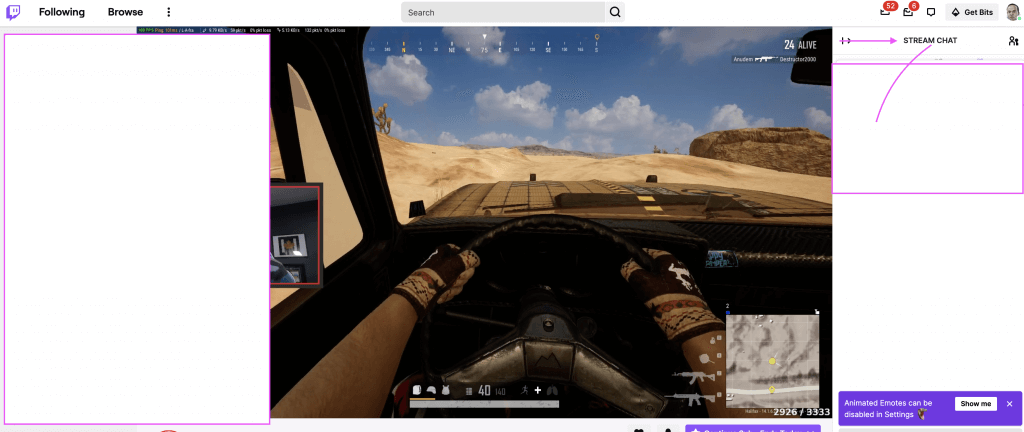
What is Google Scholar?
Google Scholar, a powerful search engine that allows you to find scientific literature, is widely used by students and researchers. It’s especially useful for finding and accessing publications you already know or performing a quick search on a subject.
Google Scholar is less helpful if you need to review literature on a topic. Google Scholar has limited options for combining multiple search terms with Boolean operator (like AND, OR and NOT). Google Scholar searches the entire text of published articles by default. Advanced search allows you to restrict your search to certain fields (author, title, journal, date), but you cannot limit your search only to e.g. Scopus only allows you to search title, abstract, and keywords fields.
Why create a Google Scholar Profile?
Google Scholar profiles are a simple way to collect your publications and citations so others can find you work. They also make it easy for other people to find accessible copies of your publications. After you’ve created the profile, you have the option to set up automatic updates. This will save you time and allow you to keep your publications updated automatically. Your profile will be ranked higher in Google Scholar searches if you have any relevant work.
You can use the free Publish or Perish software to analyze your citations with the data from your Google Scholar profile if you work in an area not covered by the Clarivate or Scopus blibliometric tools. This free service may end at any time.
How to access publications
Google Scholar can be used from the WUR Library to automatically access the WUR collections if you’re on campus.
To make it easy to access licensed resources, ensure that the Google Scholar website links to WUR Library. Go to Settings at the top of the page if you don’t see the ‘Get it from WUR’ link next your search results. Select Library links to add Wageningen University & Research Library.
How to Set up Google Scholar Profile
It takes only a few minutes to create a profile.
- Before you can start, you will need a Google account. You can either use an existing account or create one.
- Go to Google Scholar, and click on “My citations”.
- Follow these instructions to add your affiliation information as well as your University email address. You will receive an email asking for validation.
- If you have one, add keywords related to your research to the link to your University’s home page.
- If you wish to personalize your profile, add a photo.
- To create your basic profile, click on the ‘Next step’ button.
- Google will suggest the right publications and ask you to confirm. You should be careful if your name is a common one as other publications may appear in the suggestions. You might not want to include certain types of articles (Google indexes many content, including book reviews and newsletters).
- You can search for missing publications using article titles and DOIs. If necessary, you can manually add missing publications.
- Publicize your profile – others can find it and see your work.
After you have created your profile, Google Scholar will automatically update it with any publications it believes are yours. During the setup process, you can choose between manual or automatic updates.
How to Improve your Search Results
These tips work well in Google!
- The Advanced Search option is available in the menu. It allows you to restrict results by year range or search in specific fields. Although these options may not work perfectly (as shown above), they can be helpful in limiting the number of results.
- To search for multiple keywordsnext each other in the given order (like in compound terms, or an exact phrase), use double quotation marks. Google (Scholar) will combine multiple words with the operator OR.
- Use the OR operator to include other terms. Google Scholar doesn’t always include synonyms in search results. You can combine these terms with the OR operator to find more. (a pipe), e.g., “heart
- You can exclude specific terms using the – operator. You can exclude as many terms you like, e.g. mercury -ford Mercury -freddy Outboards -planet.
- Allintitle – Limit your search to terms that appear in the title, e.g. allintitle: “agaricus bisporus”.
- Filetype Limit your search to certain file types using filetype or ext. E.g. “agaricus Bisporus” filetype.pdf
- Site – Limit your search to specific websites or domains. This can be useful for websites without good search options, e.g., “plant diseases” site:journals.plos.org. You can restrict your search to certain domain extensions by limiting the country or type institution you are looking for, such as “plant diseases site:.edu” (academic institutions located in the USA).
- Combine the above to perform more precise searches, e.g. allintitle: “carbon dioxide” OR “CO2 -phosphorus” site:.edu
- Customize your search via Settings and take advantage of other useful features in Google Scholar. You can create your own bibliography (called My Library), set up literature alerts, and let Google Scholar import citation links to
How Google Scholar Can Help You
If you want to access scholarly literature, Google Scholar is the best resource for you. This free web search engine indexes the full text of scholarly literature, including book, journal, and conference papers, as well as the metadata of the sources. It covers many disciplines and publishing formats. If you are researching a particular topic, you can use Google Scholar to find relevant information. Listed below are some tips for using Google’s scholarly literature search engine.

– You can edit the metadata of publications in Google Scholar. This is useful if you are researching a certain subject. Often the citation data in Google Scholar is inaccurate, and you may want to check the original source for accuracy before using the tool. For example, if you are researching dinosaurs, you should use the database’s “References” function, which allows you to view only the articles cited by the author.
– You can search by subject and country. Advanced search will pull up articles and book titles published between 1990 and 2000. You can also exclude the United States and patents. For case law, you can use advanced search, which will return the free versions of the articles.
The scholarly articles that you find in Google Scholar can be found in your Google Scholar library. This allows you to browse related works, check out the references of an article, and save it to your library for easy access in the future. You can also export your citations to another website. This feature is extremely useful for students and researchers with little time. You can save your research to your own database, too, which is helpful for future reference.
A Google Scholar account will allow you to create your own custom searches. You can add multiple keywords to a search, and you can even search for articles by topic. Once you’ve set your preferences, you’ll be able to customize your searches. You’ll be able to use different fields to narrow down your results. You can also use the advanced search feature to limit your search to specific fields, such as books and journal titles.
Don’t Miss : Google Classroom – Creating and Leaving a Classroom

